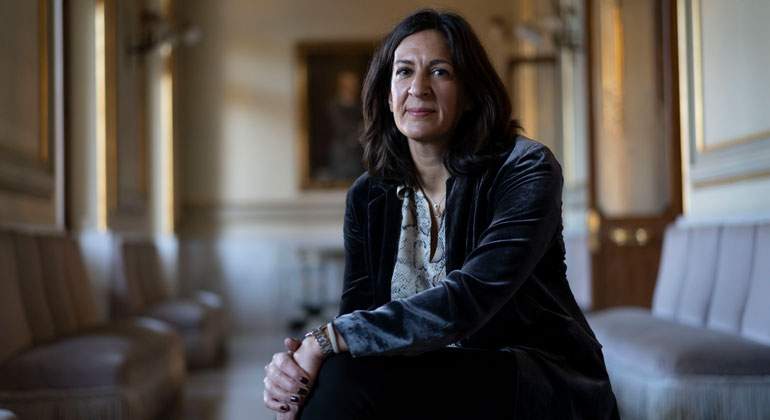Bolsas y Mercados Españoles (BME) launched its first gender index on November 30, the Ibex Gender Equality , which brings together the 30 companies of the General Index of the Madrid Stock Exchange with more directors and executives. In it, all members weigh the same, regardless of their capitalization and liquidity.
Fifteen are from the Ibex, and the other 15 from outside it. The manager of the Spanish stock market already had the Ftse 4Good but, after the acquisition by the Swiss group Six in 2020 , it plans to launch a new family of ESG indicators (based on environmental, social and governance criteria), emulating the from your womb. This is explained by Carmen López, head of indices at BME. See more articles on sustainable indices atthe ESG Economist.
Why launch a gender index before a broader ESG one?
The main reason has been the availability and reliability of the data, which are public, from the National Securities Market Commission (CNMV). But the idea is that this is the first of a family of sustainable indices; it is in our strategic plan to launch ESG indices probably next year, very soon.
Will we see an ‘Ibex ESG’?
Yes, in line with the indexes that Six is doing, a group of which we are now part. It will be something very similar to what Six already has.
Equitable and profitable funds and companies
Profitable and ‘equal’ funds and companies
I do not know the sustainable indexes of Six, but I understand that it has one of gender and … which more?
Yes, one on gender, and several ESG, on equity and also on bonds. Since we do not have, let’s say, a fixed income Ibex, we will start with that of shares. One of the great challenges that we encounter with sustainable indices is the data: their reliability, their transparency, where they come from, which provider do you choose, if you develop them in- house …
In principle, for sustainability indices ?? such as the one that we already have with Ftse [the Ftse 4Good] is part of the ratingsor sectors that a company assigns to the listed ones, and you establish your cut-off line. This cut depends on your universe, on how many companies comply. You can be more or less restrictive. If you get an index with five values, you have to lower the bar a little. Six has a data provider called Inrate, which is Swiss and currently analyzes Swiss companies. I don’t know if it will be our supplier, or if we will have our own data from Six’s sustainability area, or if we will discover another supplier that fits us … it is something that is still very open.
Does Six have ESG data providers on your radar that you could buy?
Yes. Six this year acquired Orenda, an alternative ESG data provider. As soon as we have those ratings of the companies, an index could be developed. From there, the inclusion criteria are defined, that cut-off note to enter, and the universe (if we want to do it from the Ibex 35, or if we also want the Medium Cap , and the Small Cap ??).
“Now, being ‘sustainable’ is still a plus, but, very soon, if you do not follow these criteria you will be out”
And will we also see a Spanish sustainable fixed income index?
Everything is possible.
To enter the Ibex Gender Equality it is necessary to have between 25% and 75% female directors (the CNMV’s recommendation is that this year be at least 30%) and, in addition, 15% -85% women in the high direction. Have you been undemanding?
It seemed appropriate to lower that limit, because there are not many companies that meet that recommendation, and one of the objectives is to encourage them to want to appear in this photo. What we have done is apply this double filter, and 30 Spanish companies [the 30 members of the index] have passed it.
We realized that many companies declare 0% women in this direction, and this double criterion helps to avoid the famous greenwashing. It is about women not coming to the board because regulation imposes it, but because they have participated in the decision-making of the company. What regulation has done is to give that push to companies; You have to think that a few years ago sustainable investment was, let’s say, rare, and now everyone wants to be sustainable. Now this is a plus, but, soon, if you are not sustainable, you will be out.
It is that probably in 5 years this index will no longer have a reason to exist, it may be ephemeral. Or maybe it stays only for companies with more than 80% women, which I don’t know if that makes sense.
It is precisely for this reason that we also establish that upper limit at the index entry range. We do not pretend that the world is run by women, this is not the goal, just that we have the same opportunities. Diversity in the management of companies has many advantages, it is something that has been analyzed, it is necessary to have a diverse team for optimal decision-making.

